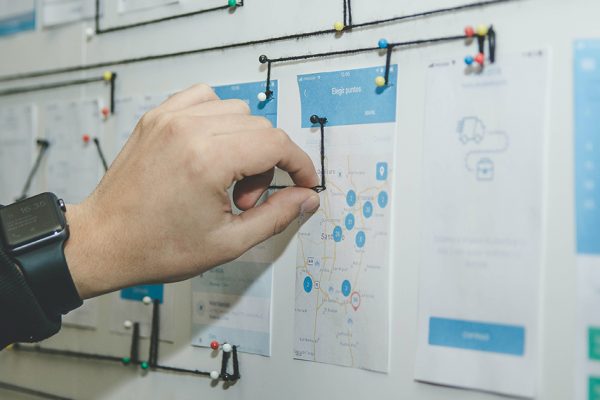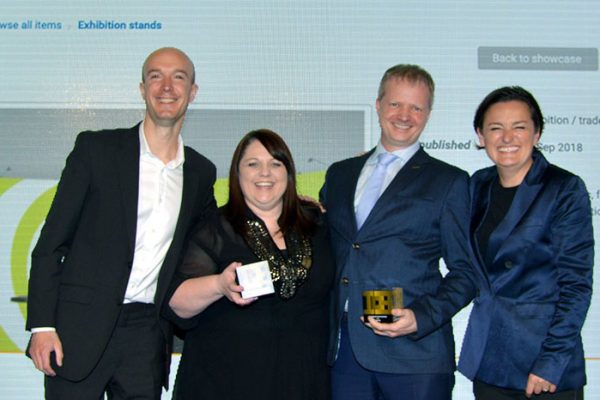Put simply, digital asset management (DAM) is software that helps you catalogue, store and access digital files in a way that actually makes sense. Although you could repurpose something like SharePoint for digital asset management or a manual file-folder system, a full DAM is best thought of (and should be thought of) as software purpose-built for managing digital assets.
This answer, however, begs two questions:
- What is a digital asset? These are your files stored on a computer (or in the cloud… which is basically a computer), that you can access from your computer or smartphone. This includes anything from a Word document to a picture you took this morning of your dog. You can store any type of asset with DAM, but at Brandworkz most of our clients use our system for brand assets.
- What is a brand asset? Brand assets are all of the files, images, documents, videos and more that make up your brand. They are everything that you have that is branded in one way or another, and need to be kept consistent and up to date.
With digital channels now central to business success, getting your digital assets in order has never been more important. Fundamentally, there are a lot of options when it comes to good digital asset management (DAM), and we’re gonna provide a beginner’s guide to it all.
We aren’t DAM experts here at Brandworkz. We’re experts in brand management software (BMS), and have built up years of experience working with clients to improve their digital asset management software situation, which is the main reason we’re writing this article. Fundamentally, we believe DAM needs to sit at the heart of a wider brand management context — working with (rather than against) things like asset approval workflows, templates and more. So, with that in mind, let’s get started!
Suggested reading: A central outcome DAM can help you provide is improved brand consistency. For some hands-on support, check out our free resource — The Brand Consistency Toolkit.
Why you need to think carefully about your DAM
To use an obvious metaphor, without a DAM, water will flood your assets, leaving every single aspect of your digital media drenched, scattered, and impossible to clean up before the next wave hits. THIS is why you need to think carefully about a DAM that, ideally, provides complete cover for your assets during any future deluge.
Even if a makeshift solution is somehow managing to keep your branding afloat right now, one major downpour (e.g. a rebrand or even an upcoming Halloween campaign), could leave your processes not just drowning, but in HOT water (ok, no more dam or water jokes) when it comes to:
- Distributing changes company-wide
- Sticking to brand guidelines
- Creating new marketing materials (which can take around 6,107 hours a year!)
- Managing approval workflows for multi-channel use
- Finding branding variations
Failing to think about your DAM is basically going to make life harder for everyone, and exacerbates the central challenges faced by brand managers.
Without necessarily requiring you to do much more work on the ground, DAM software offers the ideal solution, allowing you to carry on doing what you do, simplifying how you do it, and simultaneously making sure that your branding defences are strong enough to hold up to even tidal level disruptions (which will probably prove pretty useful in this day and age!).
What to look for in a good DAM
In theory, the processes of any half-decent DAM system will follow a few fundamental basics such as:
- Encoding and indexing
- Metadata creation
- Advanced search capabilities
- Version control
- Governance through permissions
- Auditing and review notifications
- Simple downloading capabilities
- Transcoding
Some DAMs also incorporate workflow capabilities, integrating approval and annotation software in order to dramatically streamline the process of asset creation. Then there is the question of integrations, with different DAMs playing better with your other toys (e.g. marketing tools). Rather than reaching for the first DAM you run into, it’s essential to delve a little deeper. There are six primary factors that we suggest you keep in mind.
Factor 1: Support for your file types
You’re seeking a DAM system to store creative files efficiently, so it’s going to be a problem if certain unsupported file types are left outside of this so-called one-source infrastructure. Hence, you need to ensure that ALL of your most important files can find a comfortable home here together (e.g. JPG, PNG, SVG, PSD, AI, INDD etc.). Remember, not all creative files are images, your text documents will need a place to stay as well.
Support for digital asset management file formats is one thing. However, a good DAM should also be able to run with every element of even your largest files, as well as providing special support for your most important files. So, you need to think about:
- Uploading and downloading: Can it seamlessly handle even large files?
- Previews: Are previews available for video/image/etc.? This one is really important, particularly for your most used file types.
- Text extraction for documents: Is text easily searchable and always accurate?
- Metadata extraction: What’s extracted, and how accurate is it?
Factor 2: Multiple types of permissions
Even when they’re all lined neatly in a row, choosing the right flavour from a full box of chocolates can be difficult without going through the whole long list of options. Equally, even well-organised files in a seemingly efficient DAM are going to get overwhelming for teams if they have to choose from thousands of assets. There is a broader point here about the importance of curating your asset portfolio. However, you can make things even simpler for users with a range of permissions that keep them focused on only the assets relevant to their job. There are two key priorities to this:
- End-user permissions on a folder-by-folder basis: Ensuring only access to relevant creative files and digital content for end users according to project participation, job role, etc.
- Admin permissions on a folder-by-folder basis: Specified admin permissions that ensure the wrong files are never added to or deleted from the wrong sections.
Factor 3: Expiry and review dates (and notifications!)
Unlike that mature cheese in the fridge you’ve been saving, branding content doesn’t get better with age. Instead, it gets boring, inconsistent, and even risks falling outside of regulations.
Of course, you could try to tackle this yourself with files and charts and stuff, but marketing materials are so prolific at this stage that you’d never be able to work fast enough to totally keep on top. Hence, you NEED a DAM that takes care of this for you, one that provides functionality that can keep your participation to a minimum with the help of:
- The ability to set individual review days for all files
- The option to auto-disable file downloads once that date passes
- Real-time alerts about ALL files coming up for review
Factor 4: Integration with the tools you already use
No one likes a tool that turns up late to the party and then sits off to the side looking aloof, trust us! It creates an awkward atmosphere and, more importantly, in this instance, it breeds poor functionality.
That’s why you should always seek a DAM solution that integrates with the other tools in your marketing stack — and even the wider business. However, one really important thing to consider is access to assets (through integration with your DAM) from the creative software being used to produce deliverables, e.g. Adobe, Microsoft, Google, Canva, etc. This makes it possible to seamlessly access on-brand assets, and basically removes the risk that creatives use unapproved assets because they can’t (or won’t) log in to your DAM.
Factor 5: Super easy log-ins
Similar to the last point, you need to make it as easy as possible to access your DAM, and ensure that everyone has access. The best-laid DAM is hardly going to do you any good if your end-users have to jump through hoops just to gain access… because they might just not do it. Of course, you need some kind of log-in process for security purposes, but that doesn’t make complications inevitable. Manual processes that take a few hours should be avoided in place of single sign-ons that connect DAM systems to your main corporate log-ins so that access, and authentication, are as immediate as they possibly can be.
Factor 6: Workflow and approval updated
We’re now in territory that isn’t traditional for DAMs, but it’s still something to consider. A lot of modern DAMs look to combine approval workflow and annotation tools with standard DAM capabilities, which makes a lot of sense. By merging the tools you use for the storage of assets and the creation and approval of assets, you simplify processes, improve consistency, and make it easier to update material — the importance of which we’ve already addressed.
From back-and-forth processes to multi-department workflows, real-time updates on changes and the ability to annotate within your DAM itself can certainly send your efforts here soaring while simultaneously ticking a few items off that to-do list.

Integrating DAM with the bigger picture
Even the best DAM isn’t an island, meaning that true success here also rests on incorporating the best digital asset management within a far wider-reaching brand umbrella. Our brand asset management (BAM) software here at Brandworkz provides the ideal way to do just that. It combines a sophisticated DAM with workflow, brand guidelines, logo finder, templating and brand showcase tools that deliver a full spectrum of brand management capabilities. What’s more, it integrates seamlessly with a broad range of marketing and creative software — becoming a central hub for all things brand management. However, don’t take our word for it; book your demo today!




